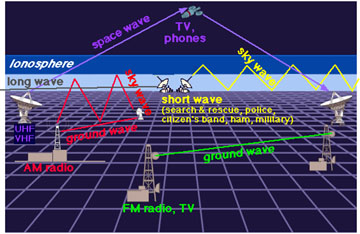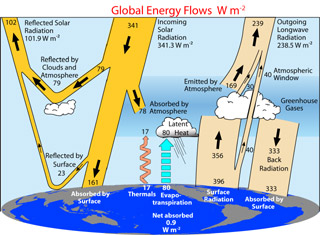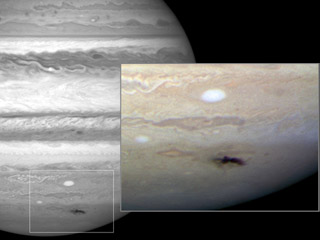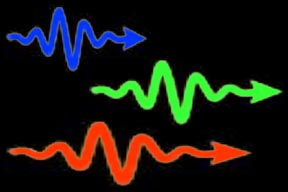Click on image for full size
Daedalus Enterprises, Inc., Ann Arbor, MI
Infrared (IR) Radiation
Infrared (IR) radiation is a type of electromagnetic radiation. Infrared "light" has a longer wavelength than visible light. Red light has a longer wavelength than other colors of light, and infrared has even longer waves than red does; so infrared is sort of "redder-than-red" light or "beyond red" light. We cannot see infrared radiation, but we can sometimes feel it as heat.
Infrared radiation lies between visible light and radio waves on the electromagnetic spectrum. IR light has wavelengths between about 1 millimeter and 750 nanometers. The wavelength of red light is 700 nanometers (or 7,000 ┼). Infrared radiation oscillates at rates between 300 gigahertz (GHz or 109 hertz) and 400 terahertz (THz or 1012 hertz).
The infrared spectrum is sometimes subdivided into the far infrared (1 mm to 10 Ám wavelengths), mid infrared (10 to 2.5 Ám wavelengths), and near infrared (2,500 to 750 nm wavelengths). A portion of the far IR, including wavelengths between 100 and 1,000 Ám, is sometimes referred to as the extreme infrared. Boundaries aren't always distinct, and difference between extreme IR radiation and microwave radio frequencies is less than crystal clear.
We feel infrared radiation as heat. The heat our hand feels when placed above a burner on an electric stovetop after the burner has been turned off (and is no longer glowing red) but has not yet cooled is infrared radiation.
Earth's atmosphere is opaque to much of the infrared part of the spectrum. Water vapor, carbon dioxide, methane, and other greenhouse gases tend to absorb IR radiation, trapping extra heat in Earth's lower atmosphere.
Night vision goggles and TV remote controls both make use of infrared "light" to accomplish their tasks.















